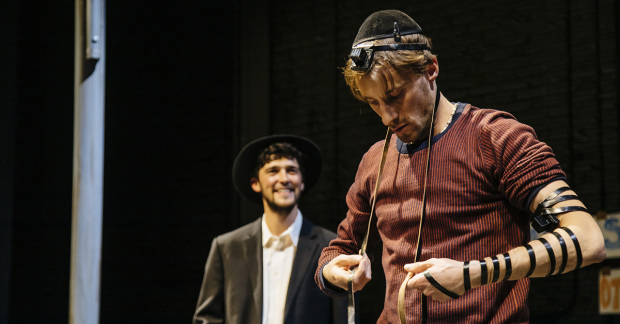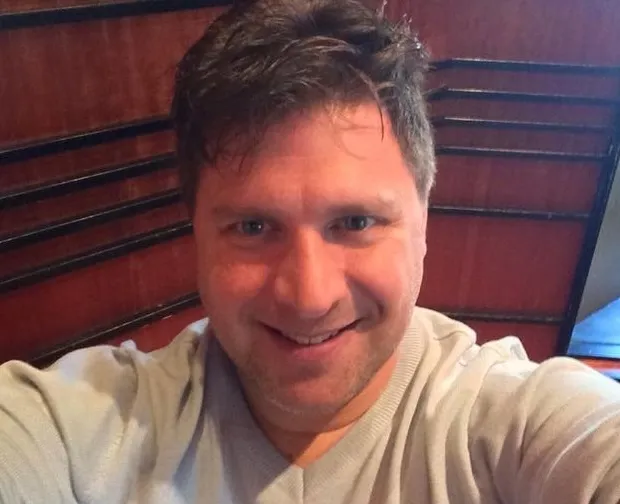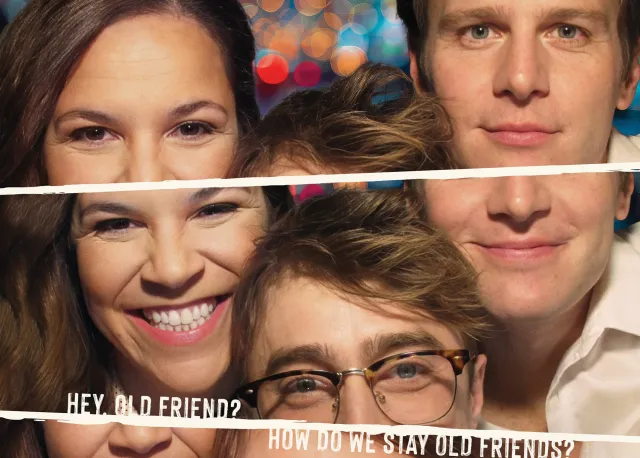Review: Tradition and the Secular World Vie for a Young Hasid's Attention in Trayf
Lindsay Joelle’s play is now running at the Geffen Playhouse in Los Angeles.

(© Jeff Lorch)
Lindsay Joelle's dramedy Trayf transports audiences to the structured world of the Hasidim, whose strict laws and customs may be outside the understanding of even some Jewish audience members. Director Maggie Burrows, with deft stage direction and sets, visually conveys the danger, heartbreak, and wonderment found in exploring the secular world outside. Though much of this world remains a mystery to her four protagonists, Burrows and her cast convey the characters' emotions with precision in the production now running at LA's Geffen Playhouse.
In 1991 Brooklyn, Zalmy (Ilan Eskenazi) and Shmuel (Ben Hirschhorn) travel around New York in a van, spreading the gospel of the Rabbi and performing mitzvoth (good deeds). All the Rabbi's disciples believe him to be the eventual Messiah. Zalmy and Shmuel, barely cracking adulthood, have been inseparable since they were children. A new aspirant to the faith severs that tight bond: Jonathan (Garrett Young), who just discovered his father's hidden Judaism, wants to find new life with his Jewish roots and begs the boys to teach him the ultra-Orthodox ways of their family and congregation. Jonathan observes this life filled with family and love and wants to fill the gaping hole left by his own father's death. Yet Zalmy sees and hears excitement in the outside world, especially in its secular music by Elton John and the new grunge movement. Shmuel, an adherent to tradition, views his best friend's new friendship to Jonathan and his wandering outside the faith as a deep betrayal.
Trayf in Hebrew means straying from Jewish law. Zalmy's secret life as an American teenager — going to roller rinks and listening to mix tapes provided by Jonathan — are not only trayf to Shmuel, but an illness. Burrows strikingly expresses that utilizing an almost bare set with an unlit lamppost covered in stickers. When Jonathan and Zalmy share music, the scene looks more like a drug deal. Zalmy hungers for that American music (even Shmuel recognizes Zalmy's affinity for music since Zalmy is the DJ in the van when they drive around). Zalmy even freaks out when Jonathan cuts off his "supply." In another scene, Jonathan lays tefillin (black leather boxes and straps that are a custom of religious prayer), and the imagery suggests someone tying a tourniquet to shoot heroin. Burrows is not equating religion or music with drug use, but she juxtaposes the characters' obsessions and wanderings with the compulsion of drug addiction in a startling way.
Joelle's commanding language draws the audience into a foreign world with crisp dialogue that sounds almost documentarian. The audience identifies because these young adults' words feel so real. Rather than relying on jokes and punch lines, Joelle finds the humor in everyday interactions.
Eskenazi and Hirschhorn have a powerful onstage rapport. Eskenazi will resonate with audience members who have had to hide some part of themselves, and have finally decided to live their lives openly, when every experience seems fresh, exhilarating, and dangerous. Though not in a sexual way, Zalmy is releasing himself from a shell that his heritage had demanded he stay locked in. Hirschhorn's Shmuel, on the other hand, expresses the kind of jealousy found when one relies on someone else for their self-esteem and guidance. Young is excellent as the spark that alters Zalmy and Shmuel's rigid lives. His desperation of fulfillment and hostility toward anyone he sees squandering what they already have, makes for a volcanic presence. In a minor role as Leah, Louisa Jacobson brings the secular view into the conversation of what she considers religious extremism. Because she probably represents more of the audience than the other three characters, Jacobson becomes our anchor.
Lap Chi Chu's stark lighting works wonders with Tim MacKabee's cold, dark set. Their collaborative work takes flight in the final moments as the drab New York corner converts into a splashy, multicolored roller rink. Costume designer Denitsa Bliznakova's suits and fedoras place the two leads in the imagination-limiting uniforms their birthright has demanded.
Trayf handles complex relationships not only between the partnerships of the characters, but their relationships to God, and to those whom the characters deem their representatives. The play never judges religion nor its customs, but leaves it to the audience to determine if the boys are clinging to something healthy or otherwise — and trusts that the audience knows that nothing is cut and dried.









